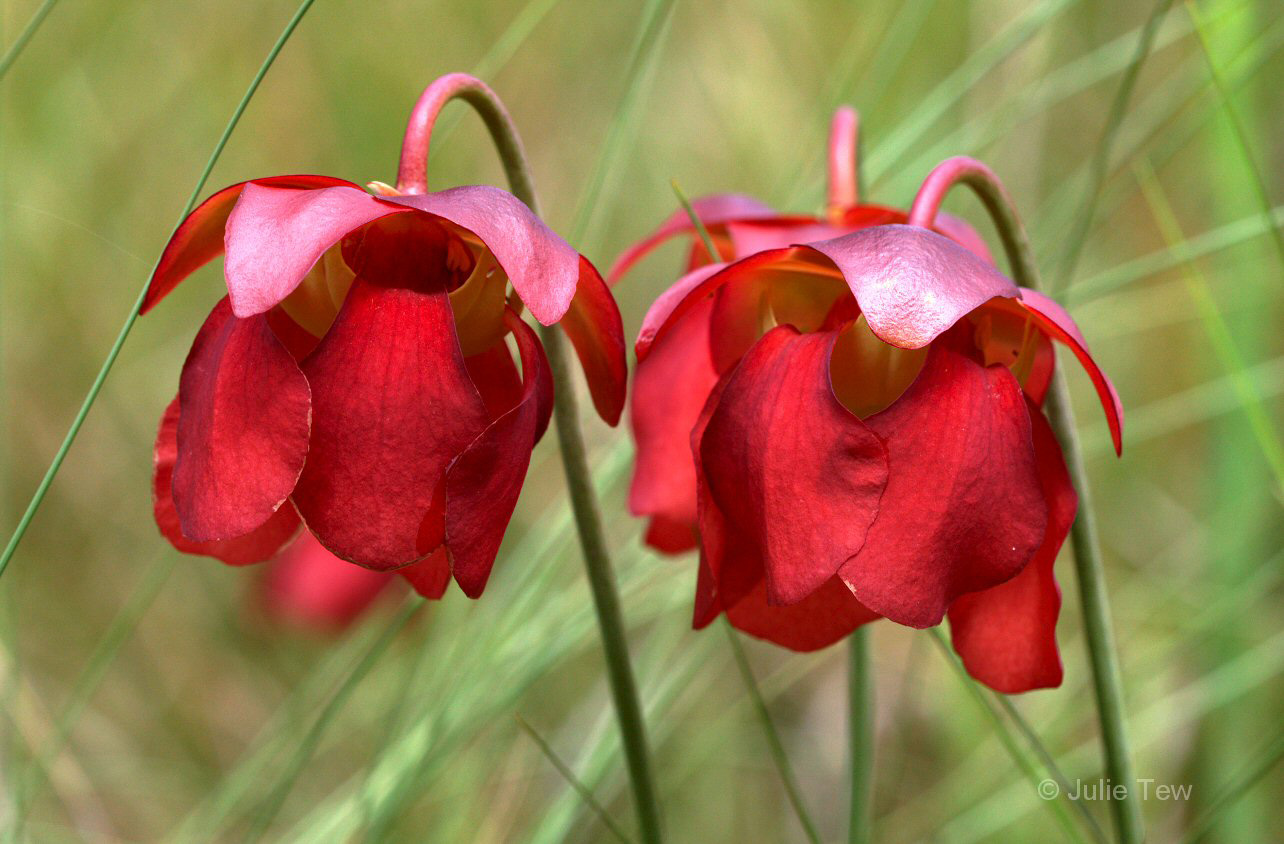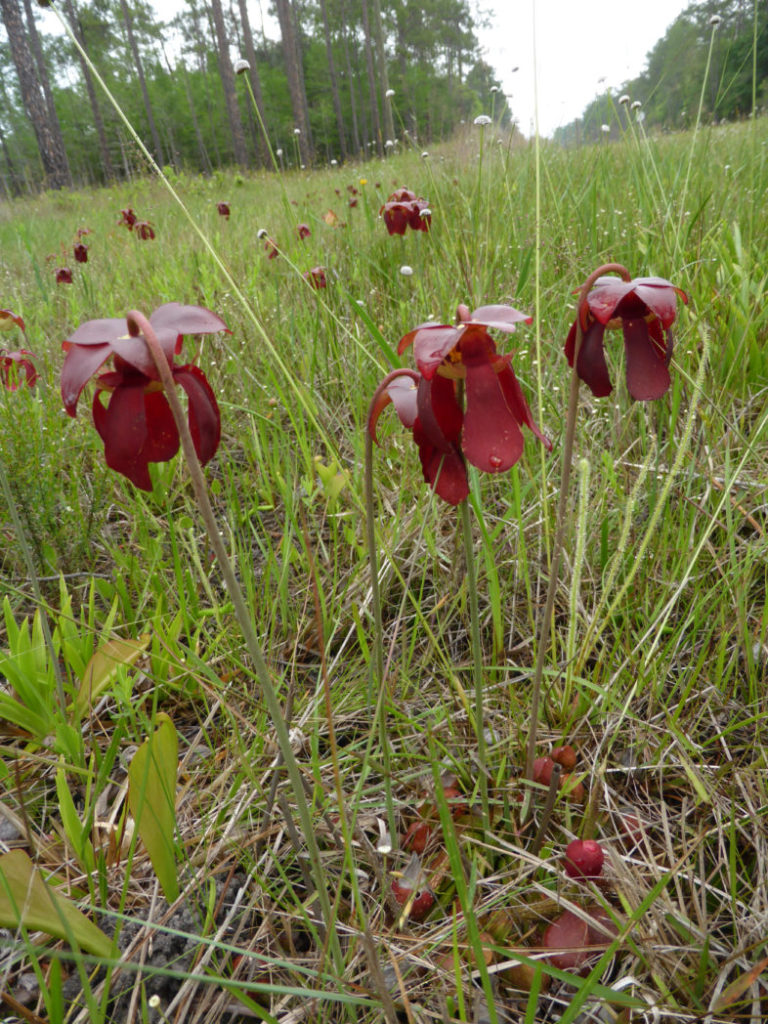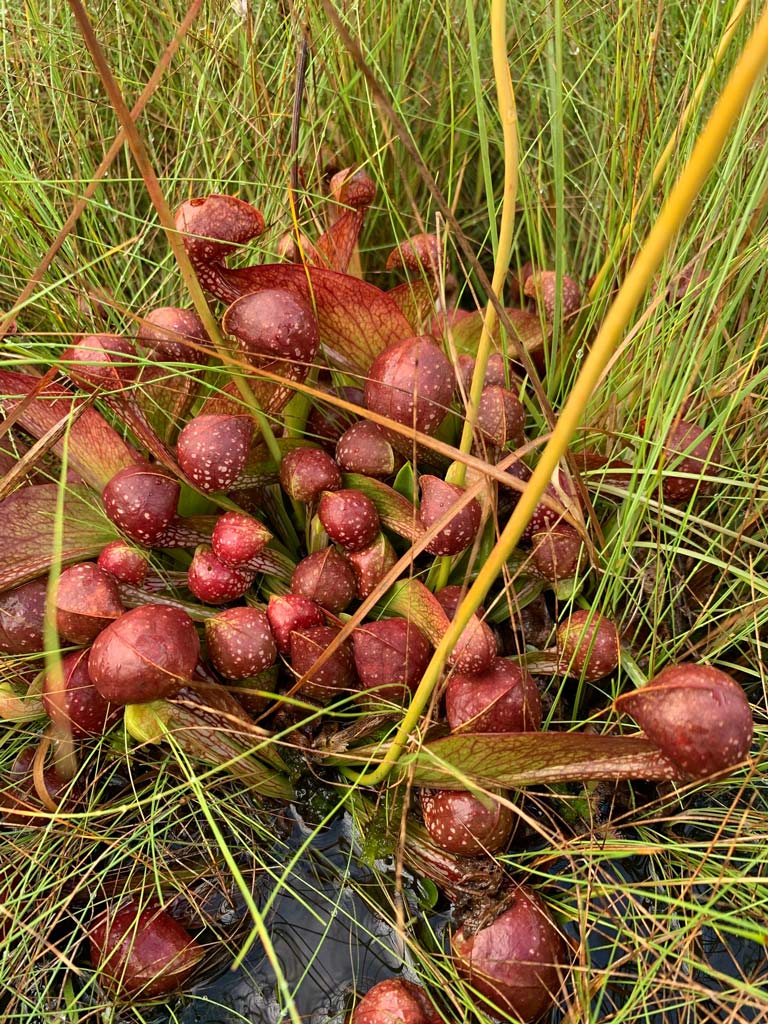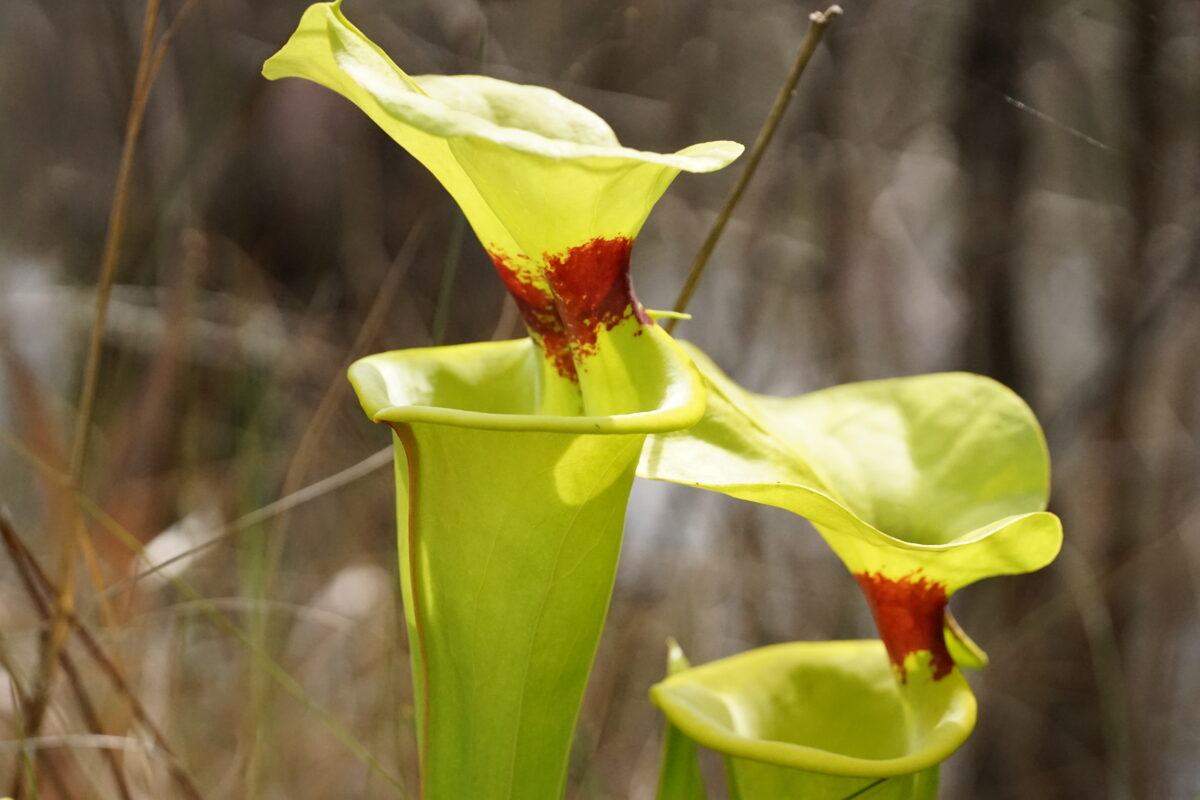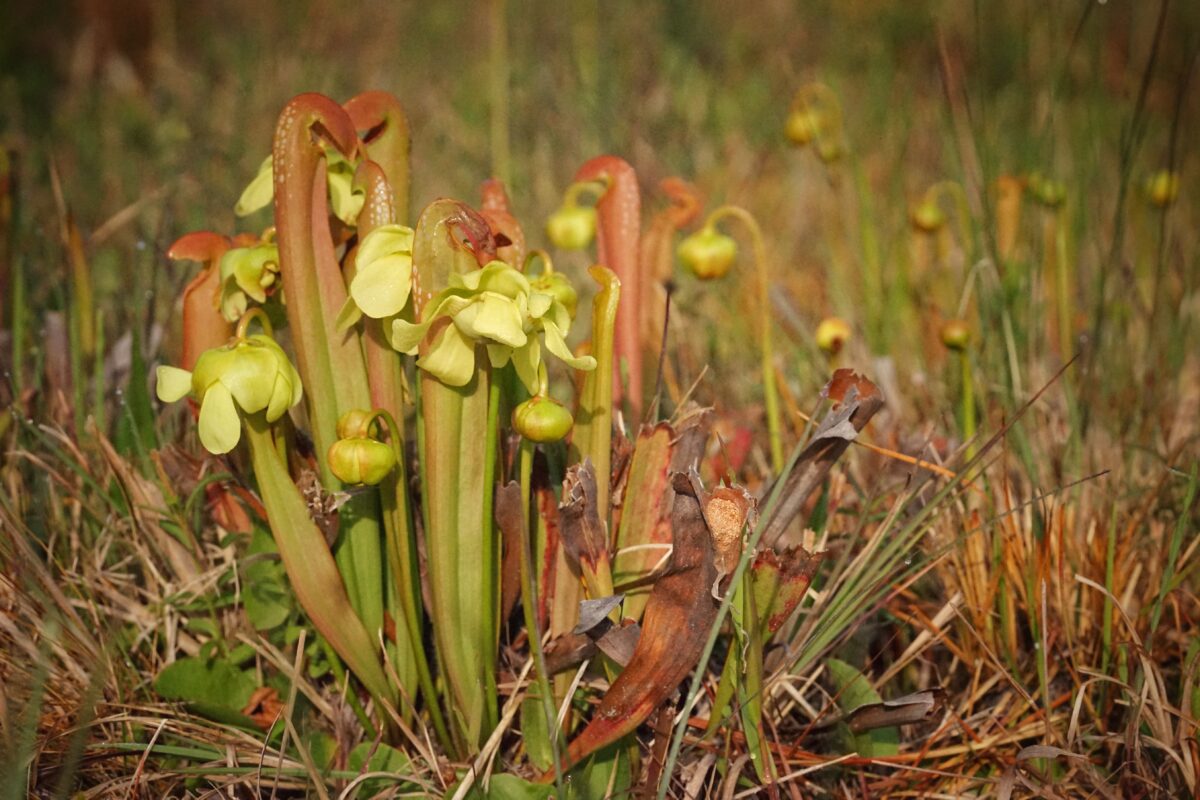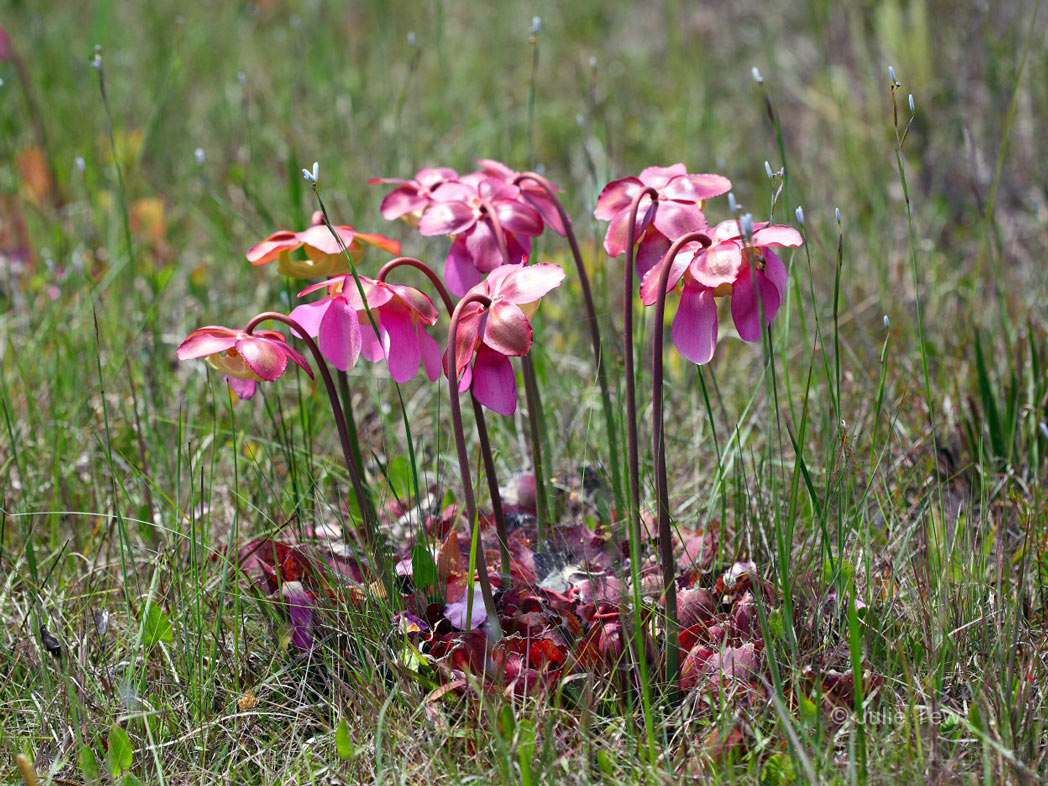Parrot pitcherplant
Pictured above: Parrot pitcherplant (Sarracenia psittacina) by Julie Tew. Click on terms for botanical definitions. View post as a PDF.
Parrot pitcherplant (Sarracenia psittacina) is a carnivorous perennial plant. Its leaves are tubular with curved lids or hoods, and form the “pitcher” part of the plant. They typically lie nearly flat on the ground in a prostrate rosette. The pitcher mouth is small, hooded and adorned with window-like features that help attract prey. The pitcher is tubular, horizontal and is lined with many criss-crossed hairs. Parrot pitcherplant flowers are red, solitary and nodding.
Parrot pitcherplant is dissimilar to most pitcherplants in both its shape and the way it traps insects. Its trapping mechanism is considered a “lobster pot” while most pitcherplants have a “pitfall” trap.
Parrot pitcherplant typically flowers in April and May. It occurs naturally in seepage slopes, wet prairies, depression marshes, dome swamps, and bogs.
Parrot pitcherplant is a state-listed threatened species. Its species name psittacine means “of or relating to parrots” and refers to the shape of the flower resembling the head of a parrot.
Family: Sarraceniaceae (Pitcherplant family)
Native range: Central to western Panhandle, Baker and Nassau counties
To see where natural populations of Parrot pitcherplant have been vouchered, visit www.florida.plantatlas.usf.edu.
Lifespan: Perennial
Soil: Inundated to saturated soils; can also grow in semi-aquatic (periodically flooded) habitats
Exposure: Full sun
Growth habit: Prostrate, 3-8 inches
Carnivorous plants have very specific habitat requirements and as such are not suited for use in urban native plant gardens. However, many Florida native carnivorous plants can be purchased from online retailers. Always be certain that retailers are certified by their state agriculture department, who inspect and ensure proper origin of plants.
Learn more about Parrot pitcherplants from the Florida Native Plant Society.
For information on other Sarracenia species, see these resources:

